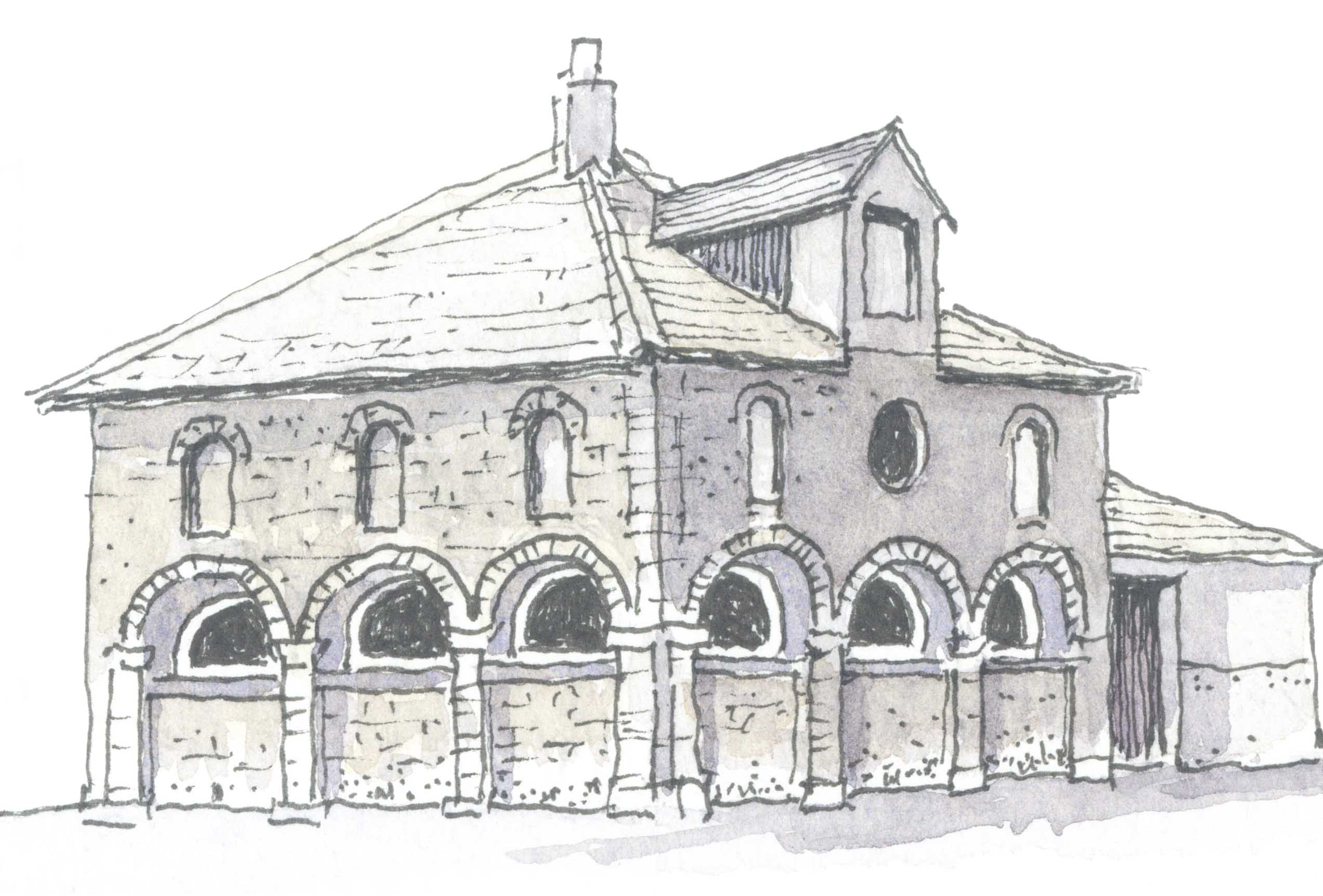REPORT ON OUTINGS OF SHAP LOCAL HISTORY SOCIETY HELD DURING SUMMER 2019
24th June – Brougham Castle.
The first in June was to Brougham Castle where they were led around the site by Joseph Jackson of English Heritage.
The site was at its best in the evening sunshine, the setting is breathtaking as it sits at the confluence of the Eamont and Lowther rivers; and the site of the only ford on the River Eamont. Beside the castle is the Roman fort of Brocavum, which was a handy source of building material for the first keep. The site and its great importance had been the subject of a talk Joseph gave to the Society in the spring.
The tour was most enlightening as Joseph brought the buildings to life describing the uses of the rooms, and how alterations had been made over the centuries.
He pointed out many interesting features that would perhaps have been missed, and gave many facts. The main building is the keep, and the impressive gatehouse has a double portcullis with a ‘killing ground’ between; and the dreaded dungeon. In the courtyard were two wells, and foundations in the ground made sense when their origins were explained. A second tower in the corner of the courtyard is known as the Tower of League, and featured four floors with chambers each with a latrine and fireplace.
Joseph related stories about the people who built, owned and occupied the castle; the Vieuxponts, the Cliffords, the famous people such as Edward I who visited. Finally the history came around to the famous Lady Anne Clifford, who owned four castles in Westmorland; Appleby, Brougham, Brough and Pendragon, all of which she restored and visited in turn; her household not only included many servants and they took with them forty-four carts and two wagons full of hangings, furniture and other items. It must have been quite a sight to see her entourage on the move. Lady Anne always referred to Brougham as her favourite home, and died there in 1676.
After her death, her grandson Thomas Tufton, Earl of Thanet based himself at Appleby and sold all the furnishings and fittings from Brougham and the other castles. The castle became a ruin, and eventually passed into the hands of the Ministry of Works in 1928.
Liz Amos thanked Joseph for giving such and interesting tour.
22nd July – Reagill.
The July outing was to Reagill for a visit to the Image Garden by kind permission of Mr Hindley the owner.
Members were greeted by Vice Chairman Jean Scott-Smith who gave a brief history of the settlement and about Thomas Bland the self taught sculptor and artist who had created the garden.
Bland (1798-1865) had filled his garden with statuary in the Italian style, and in its heyday it was the venue for an annual feast to commemorate the accession of Queen Victoria.
The gardens are on several levels and many of the statues survive in their entirety whilst others are more dilapidated, with heads and limbs missing. In addition to human forms there are many beasts ranging from lions and sphinxes to deer and dogs. Some figures are identifiable as a Greek muse of music holding her lyre, Crusader knights, Robert Burns and Walter Scott. There are also bas relief sculpture set in niches. And grottos that originally would have housed some of Bland’s oil paintings.
Bland also carved three memorial in the Crosby Ravensworth parish; the obelisk at Black Dub, source of the Lyvennet river to commemorate Charles II resting his army on their march from Scotland in January 1651, a memorial to Lancelot Addison father of Joseph Addison the celebrated essayist at his birthplace Hill Top, Maulds Meaburn; and the column surmounted by Britannia at Shap Wells to commemorate Queen Victoria’s accession.
Two poems by his neighbour and friend Anthony Whitehead (1819-1914) from his book Legends of Westmorland (1896) give a good description of the garden and Bland himself. Copies of the poems written in Westmorland dialect ‘An Address to Tourists’ and ‘The Antiquary’ were distributed.
Over the years the gardens had fallen into decay and were much overgrown and neglected. In 1999 the farm and gardens including statuary was catalogued for suction. An outcry by locals and the Parish Council managed to halt the sale of the statuary, it is now Grade II listed and included on the register of Historic Parks and Gardens. The current owner has done much to clear overgrowth and make the statues safe.
Members expressed their delight at being able to visit this unique and little known treasure.
This was the last gathering for the summer and monthly indoor meetings resume in September when Val Fermer will give a talk on Pubs and Inns of Westmorland.
The Society’s exhibition ‘Steam over Shap’ to mark the 175th anniversary of commencing construction of the Lancaster and Carlisle Railway is on display at the Heritage Centre in the Market Cross, every Saturday and Sunday afternoon and some weekday afternoons; admission is free but donations are welcomed.
Throughout August the Local History Society will be working in collaboration with the Old Courthouse and their exhibition of railway art and photography. There will be special events; a model railway exhibition on 18th; a talk by the Stephenson Society including images from the Percy Duff collection on 19th, a guided walk to railway related sites on 24th and an evening to celebrate the railway heritage, with music by Bill Lloyd, poetry and readings as the finale on 1st September.
